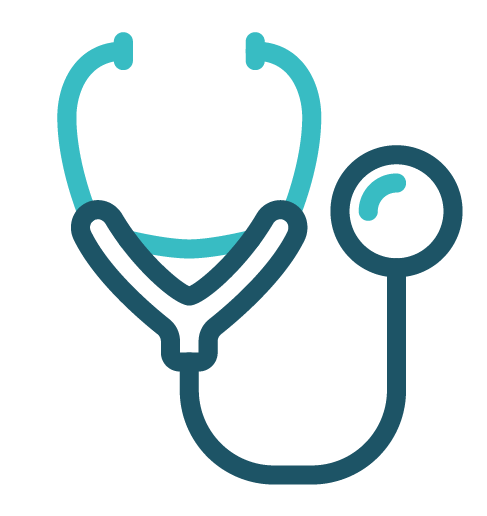For businesses to be successful, they must develop revenue cycle processes. This is a prescribed timeline that ensures payment for products or services is recorded and tracked accordingly over time and some form of reconciliation is achieved before the start of the next revenue cycle. Ideally, complete, expected payment is collected within a given revenue cycle, but many businesses accept payments in the form of reimbursements, which can complicate revenue cycle operations. This is a form of payment most health systems use to some extent.
Managing Payment For Care
In such a complex world as today's healthcare, managing your revenue cycle manually is practically unsustainable. If you want your health system to grow, you can't keep up with the increasing amount of paper documents, manual data entry, and coordination involved by simply adding more administrative employees - that labor cost will eat into your bottom line, and furthermore, this method has proven to be very ineffective. Sooner or later, you will need revenue cycle management automation.
Getting Automated
Significant benefits are realized when using an electronic document workflow hub for your revenue cycle, which takes structured and unstructured documents from all different sources – fax, postal mail, electronic medical records (EMR) – and consolidates them into a single repository. Companies that are using smart technology to automate tasks and provide a workflow to track everything are seeing their number of collections decrease tremendously. In addition, over time they’re seeing their document turnaround time improve dramatically.
What Is Revenue Cycle Management Software?
The key to effective revenue cycle management in today’s competitive market lies in establishing a technology-enabled process. Having a digital and automated revenue cycle management solution enables healthcare providers - including those in the post-acute space - to be proactive about their organizations’ revenue and financial performance. Instead of allowing claims to impact viability, providers can focus on early detection, identify eligibility issues, and prevent initial claim rejection while also ensuring timely reimbursement.
A Holistic Purpose for Revenue Cycle Automation
Having this kind of software doesn’t mean healthcare providers need to outsource revenue cycle management or settle for a one-off solution that only accounts for key billing processes. Instead, organizations should consider implementing a comprehensive solution that encompasses every element of care coordination, from patient intake to ongoing performance monitoring and every step in between.
These healthcare workflow management solutions give revenue cycle leaders, administrators, and clinicians the tools and processes they need to maintain optimal internal operations and provide the best quality of patient care.
Benefits Of Revenue Cycle Management Within A Workflow Management Platform
Simplify Intake And Onboarding
Revenue cycle automation saves administrative staff significant time and effort, from initial patient intake to ongoing record-keeping and claims submissions. This can particularly transform small agencies in post-acute care, where staff is frequently overextended and resources can be limited or antiquated.
With a reliable platform, processes are streamlined to ensure that providers gather thorough, accurate information in one swoop. Healthcare systems can reduce patient onboarding time by up to 50%, and this faster onboarding speeds patient care initialization, reduces administrative tasks, and simplifies claims filing and management down the line. These efficiencies help healthcare operations function more effectively and minimize referral costs — by an average of $60 for every referral that funnels through their pipeline.
Capture Reimbursable Conditions
At The Start Of Care
As providers evaluate new patients and begin creating treatment plans, the right care coordination platform can support a healthy revenue cycle process and improve patient care from the first touch.
Equipped with intelligent automation, care teams spend less time filing paperwork and more time with each patient. This allows them to assess patients’ conditions more thoroughly at the start of care, identify reimbursable conditions and build out detailed care plans based on patient interactions and the robust documentation collected at each interaction. All documentation should be aggregated in one centralized location so care teams can reference accurate, updated patient information throughout the course of care.
Process Clinical Documentation
Efficiently And Securely
Documentation is a primary driver of effective care coordination. As mentioned above, it drives internal processes and enables care teams to provide the most valuable treatments to patients while also ensuring care is recorded, monitored and billed appropriately.
A quality workflow management and care coordination platform holistically supports a healthy revenue cycle by capturing and processing critical documentation through a central channel. Providers can create, upload, or reference digital documentation through a secure, user-friendly interface that centralizes patient records and ensures compliance with HIPAA and payer regulations.
Speed Up The Billing And Reimbursement Process
With precise intake, documentation and care coordination processes in place, final billing and reimbursement workflows will accelerate automatically. Rather than sifting through disorganized data or resolving a growing list of claim rejections, intelligent automation allows accounts receivable teams to coordinate with internal and external parties more efficiently.
Fewer errors and delays help shorten the average document sent-to-signed cycle and reduce time spent on accounts receivable tasks by up to 60%. As healthcare organizations, payers and providers adjust to evolve with new legal regulations and billing frameworks, a reliable, intuitive billing system within an integrated solution has grown essential for success.
Forcura Is Your Solution For Optimizing Revenue Cycle Management
Forcura, a healthcare workflow management company, enables healthcare providers to streamline incoming patient information and coordinate ongoing patient care resulting in improved business performance.
Forcura’s solution provides transparency into clinical records and workflows so users can take follow-up actions accordingly. Analytical data can also be used to optimize processes and uncover new efficiencies throughout the revenue cycle. More efficient processes allow final collections on outstanding accounts to begin sooner and yield more profitable results.
Check out Forcura today to see how your care teams can meet revenue cycle management requirements promptly and receive the full payments they deserve.



